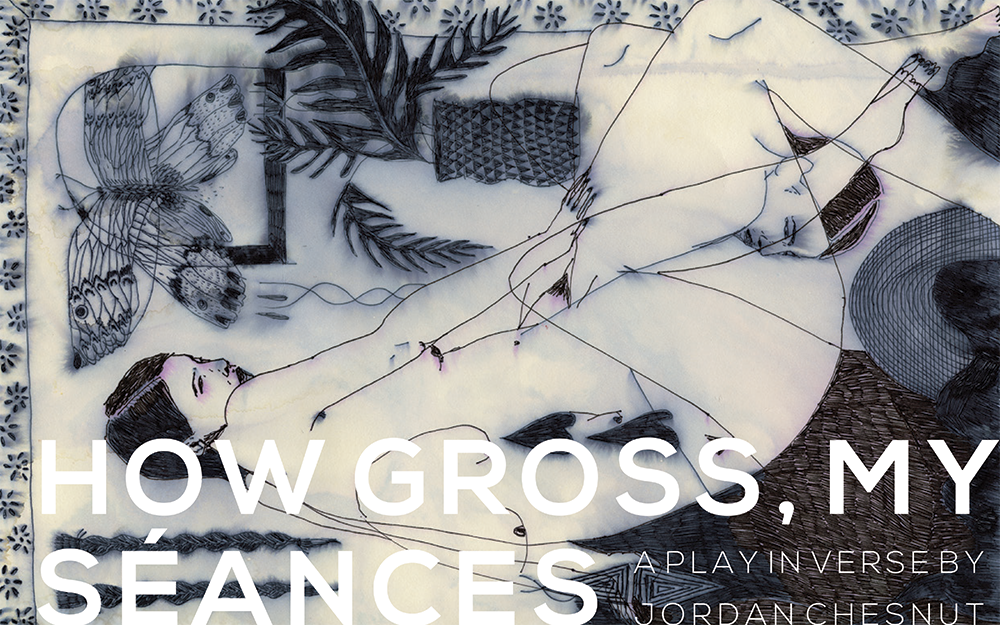

How Gross, My Séances
Jordan Chestnut
How do we live precariously intertwined and determine relations in "a world of wounds"? Amidst mass extinctions, wars against marginalized identities, and unstoppable pop hits like "Thank U, Next," how does someone contend with their own uniquely felt, individual loss? Here, memories are animate tattoos (flash sheet included), a chorus of crumbling statues consult and console, and a talk show host interviews our moody antagonist in a psycho-drama that interrogates subjectivity, grief and its embodiments, discourse around dispossessed persons, responsibility within and outside of romantic love, and the efficacy of language itself. In doing so, How Gross, My Séances subverts notions of unity or cathartic return and explores other ways of communing with each other and our dead.
Plays Inverse titles are now part of 53rd State Press
Tragedy, Verse, Necropastoral
Cast: 3M, 4W, ~10A
Goodreads //
Cover art by Lauren Roche
Illustrations by Aidan Koch
PRAISE FOR HOW GROSS, MY SÉANCES:
Jordan Chesnut's How Gross, My Séances is a true Necropastoral: nocturnally green and vividly black, tenderly adorned with word play, tattoos, and dance moves, lit up with avatars, frogs, and celebrity appearances, and galactically moiréd with both classical and contemporary trappings of absurdity and grief. An inventive paean for a collapsing world that can't quite reach the end of its catastrophe.Joyelle McSweeney
author of Toxicon and Arachne
Just as even fixed ink can generate fluent tributaries, Jordan Chesnut's play in verse, How Gross, My Séances compels us to map our inner labyrinths as it navigates an underworld system of winding canals and sudden switchbacks through a seething murk of febrile decay, its own sorrow fruiting some luminescent hallucinogen like a guide lamp hung from the ferry's prow and leading us ever deeper into the shadow, ever closer to the fountainhead of a vital new mythology.Ken White
author of Middlemost Constantine
How Gross, My Séances abstracts and ruminates on loss, popular culture, literature, familial relations, and converts them to the philosophical and metaphysical realm—invariably connecting spirituality to devoutness and doubt to bewilderment. Throughout, this collection constructs an authorial speaker who endeavors to address the inevitable society-based traumas that affect grieving. I admire the poignant discursive descriptions and cumulative interrogation, which are stunning examples of Chesnut's ability to craft dramatic tension.Prageeta Sharma
author of Grief Sequence

